
Of the first 13 journalists, two remain today: veteran journalist Tran Ba Lan, former Head of the first Faculty of Journalism of the Academy of Journalism and Communication, and veteran journalist Lu Kim Hong, former Editor-in-Chief of the Northwest Newspaper.
The first 13 journalists to study abroad
Veteran journalist and teacher Tran Ba Lan, one of the first 13 Vietnamese journalism students studying abroad, texted me on Zalo. He said: “On the occasion of the 100th anniversary of Vietnam’s revolutionary journalism, I am providing “exclusive information” about the first 13 Vietnamese journalists sent abroad to study to preserve as historical documents for personnel work as well as training of human resources for the country’s journalism.” He said that, to date, of the 13 students studying abroad at that time, only two are still alive and both are nearly 100 years old. This is truly valuable information for the history of training revolutionary journalism in Vietnam.
After the glorious Dien Bien Phu victory in 1954, when the country began to enter a transitional period from resistance war to peace, the Party Central Committee and the Government identified one of the top important tasks as training cadres, especially intellectuals - including journalists. From the battlefields, 13 journalists - who had made important contributions to information and propaganda work serving the Tran Dinh campaign (code name of the Dien Bien Phu campaign) - were selected to study at Peking University, China. This was a very special class, not only because of its symbolic significance after the victory, but also because the participants were all excellent journalists, coming from many different press agencies.

13 journalists including:
1. Vu Hoang Dich (Tay Bac Newspaper),
2. Tran Ba Lan (Tien Phong Newspaper),
3. Thanh Binh (Lao Dong Newspaper),
4. Nguyen Nhu Hoan (People's Army Newspaper),
5. Vu Ngoc Nghi (pen name Nhu Quynh, Women's Newspaper),
6. Tran Huu Nang (Vietnam News Agency),
7. Cao Kim Bang (pen name Cao Kien, Lao Dong Newspaper),
8. Pham Phu Bang (People's Army Newspaper),
9. Hoang Van Ta (Tien Phong Newspaper),
10. Dam Boi Rao (Vietnam Independent Newspaper),
11. Pham Khac Lam (Office of General Vo Nguyen Giap),
12. Lu Kim Hong (Tay Bac Newspaper),
13. Tran Dinh (Nhan Dan Newspaper).
Initially, journalist Le Chung (Chinh Yen) was on the list, but due to domestic duties, he could not go abroad to study. A year later, journalist Pham Khac Lam, working at the Office of General Vo Nguyen Giap, was added to the list, still keeping the number "13". In Western culture, 13 is a "taboo" number, but in East Asia, this is the number of birth, the origin of a development...
In Beijing, China, 13 journalists were trained in politics , supplementary knowledge (literature, history, geography, etc.), professional skills and foreign languages to meet the requirements of journalism activities in an international environment, in preparation for the new development stage of revolutionary journalism. They not only acquired knowledge but also made friends and learned from international friends. They became the first generation of Vietnamese press cadres to have the opportunity to receive specialized training abroad after the resistance war against French colonialism.
Veteran journalist and teacher Tran Ba Lan “boasted”: During my time studying in Beijing, I wrote two articles published in Thanh Nien and Cong Nhan Daily Newspapers. The article dated April 30, 1957, with the title “Spring is also warm here” - talked about the friendly country helping Vietnamese students studying abroad, when they were sick. I wrote it to acknowledge the friendship between the two countries. There was another article I wrote in Shanghai, reflecting the steel movement at that time. Unfortunately, I can no longer keep this article. The editorial offices paid me a high royalty, enough for me to buy a suit!

The article by journalist Tran Ba Lan published in Thanh Nien newspaper (China), currently kept at the Vietnam Press Museum. Photo: Provided by the character.
Veteran journalist Tran Ba Lan sent me some souvenir photos of the time 13 journalists studied abroad in Beijing. Unfortunately, due to the time of more than 70 years, most of the photos have faded. Fortunately, there is one photo of better quality. The photo shows the scene of 13 journalists and 2 Chinese teachers in the campus. In the photo are bright faces, full of youthful enthusiasm - the writers who had just stepped out of the trenches after the glorious Dien Bien Phu victory. Among those 13 journalists, some became great writers, some took on leadership roles in press agencies, some were writers and translators. Names like Chinh Yen, Tran Huu Nang, Pham Khac Lam... became symbols in the journalism community. They contributed to shaping the Vietnamese revolutionary journalism during the period of peace and nation building.
Organizing 13 journalists to study abroad right after the greatest military victory of the 20th century shows the far-sightedness of our Party and State in the strategy of training press cadres. This class is not only a milestone in the history of Vietnamese journalism but also a symbol of the beginning of a generation of journalists who are well-trained, combining the spirit of a soldier and cultural intelligence. Among those 13 journalists, some became great writers of the Vietnamese revolutionary press; some took on leadership roles in press agencies and some were assigned to be pillars to open up the work of training human resources for journalism for the Party and State...
The first Dean of Journalism at a prestigious journalism school

Journalist - teacher Tran Ba Lan, former first Dean of the Faculty of Journalism, Academy of Journalism and Communication. Photo: Provided by the character
I am fortunate to be a student and a colleague of the next generation of the teacher - veteran journalist Tran Ba Lan, the first Dean of the Faculty of Journalism, Academy of Journalism and Communication. Although he is 96 years old this year and has been retired for nearly 35 years, he is still healthy and clear-headed. Every day, he still reads books, writes articles and especially "feeds" his Facebook with profound statuses and images, full of valuable information and documents.
This past Tet At Ty (2025), during a meeting with retired cadres and members of the Association of Former Teachers of the Academy of Journalism and Communication, Mr. Tran Ba Lan gave me a book titled "Echoes of Faith" that had just been printed. He wrote it to express his heart at the age of 95.

Veteran journalist and teacher Tran Ba Lan with his former students - the frontline reporter class, University of Journalism Course I, Faculty of Journalism, Academy of Journalism and Communication. Photo: Documents provided by the character
Journalist and veteran teacher Tran Ba Lan was born into an intellectual family in the thousand-year-old land of Thang Long. In 1946, he worked as a worker for the Long Bien Bridge Maintenance Team and participated in the revolution at the Hoang Van Thu Paper Factory, Dinh Hoa, Thai Nguyen. He was sent to study and graduated from the Inter-Zone IV Technical School (1951-1953 course). Then he was assigned to work as a reporter for Tien Phong Newspaper right after the newspaper was established at ATK Tuyen Quang.
In 1959, he graduated from the Department of Journalism at Peking University, China. From 1959 to 1961, he worked at the Press Department, Central Propaganda Department (now the Central Propaganda and Mass Mobilization Department). In 1961, he was assigned to work at the Journalism Department, People's University. In 1962, the Central Propaganda School (now the Academy of Journalism and Propaganda) was established, on the basis of merging People's University, the Cadre School of the Ministry of Education and Nguyen Ai Quoc School, Branch III. He was assigned to work at the Faculty of Journalism and was the first Head of this faculty. In 1986, he was sent to intern at the Academy of Sciences of the Soviet Union (AON). He also graduated from the University Institute, Ministry of Universities and Vocational High School, with a high level of political theory. After retiring, he published 5 books. He was awarded many noble medals and awards by the Party and the State. In 2024, he was honored to receive the 75-year Party membership badge.
At the age of 95, journalist and teacher Tran Ba Lan is still working tirelessly creatively and participating in social and professional activities. Today (June 7, 2025), he is still writing a paper and registering to speak at the Scientific Conference on 100 years of Vietnamese revolutionary journalism with valuable information as well as solutions and proposals for journalism training in the context of the media explosion, digital transformation, and artificial intelligence.
On holidays and Tet, generations of his students still come to visit, express gratitude and congratulate their respected teacher. Recently, he "boasted" that the Military Television Center, which was making a documentary about the class of frontline reporters participating in the Ho Chi Minh Campaign in 1975, invited him as the Head of the Journalism Department that year to teach and help them become journalists - soldiers who made history, contributing a small part to the 100 years of development of Vietnam's revolutionary journalism.
Journalist Hai Duong, former Head of the People's Weekend Section of Nhan Dan Newspaper, former student of Journalism Course 5, Central Propaganda School (now Academy of Journalism and Propaganda) recalled on his Facebook: Teacher Tran Ba Lan is one of the special cases. I really admire him! At his age, he is still healthy, clear-headed and regularly publishes books. He joined the Party at the age of 19 and at the age of nearly 95, he is still healthy, going to the ward and district to receive the Badge, which is truly rare.

Journalist - teacher Tran Ba Lan speaks at the Scientific Conference on 100 years of Vietnamese revolutionary journalism (June 7, 2025). Photo: PV
Journalist Tran Ba Lan was admitted to the Communist Party of Vietnam (April 26, 1949) when he was working as a worker at the Hoang Van Thu paper factory in Thai Nguyen. He recalled: This factory is where the paper for printing "Uncle Ho's money" is produced. That day, the factory leaders assigned me to draw a portrait of Uncle Ho. They said: "Uncle Ho is about to go to the Autumn-Winter Border Campaign (September 1950). He will visit our factory. Remember to draw quickly and beautifully to welcome Uncle Ho." I ground Chinese ink, found drawing paper, and took Uncle Ho's picture on the 5,000 VND bill as a model. When Uncle Ho visited the factory, he looked at the picture and asked who drew it? The factory leaders reported that Mr. Lan drew it. Uncle praised: "Thank you. It's very similar! Try to draw more pictures and photos to serve production and combat!" He “boasted”: After that time, I also had the honor of drawing a portrait of the General Secretary of the French Communist Party, Maurice Thorez, to welcome the French delegation visiting the factory. The students learned more about the “talent” of the teacher - the painter when he was young.
Colonel, journalist, poet Mai Nam Thang, former student of Journalism Class 5, Faculty of Journalism, Academy of Journalism and Propaganda, former reporter of People's Army Newspaper wrote on his personal page with the title "94-year-old Facebooker", jokingly calling his teacher "Old Man Zalo, Old Man Facebook" and describing him as "surfing Facebook quickly, asking and answering questions, responding to Facebook friends in the blink of an eye".
In 2023, on the occasion of the 78th anniversary of the August Revolution and National Day September 2, towards the 100th anniversary of Vietnam Revolutionary Press Day, the Vietnam Press Museum (Vietnam Journalists Association) organized the event to launch the book "HEAVY MEANING AND DEEP LOVE" about the life and career of journalist Tran Ba Lan. He recalled with emotion: At first, the Faculty of Journalism only had 4 staff members. The Central Propaganda Department at that time assigned Mr. Nguyen Pho to be in charge of the Faculty. After that, I held the position of Head of the Faculty. From 1962 to 1969, the Faculty of Journalism mainly opened training courses on writing skills for journalists and publishers who had not been professionally trained. At that time, the Faculty's lecturers were very few, mainly inviting experienced politicians and journalists from the Central and local levels to give lectures. They were poet To Huu, journalist Luu Quy Ky, journalist Hoang Tung, Thep Moi, Quang Dam,... At that time, he was in charge of teaching topics and subjects such as: Situation of journalism work; Party's viewpoint on journalism; journalism genres; reportage writing: writing about good people - good deeds...

Journalist and veteran teacher Tran Ba Lan was the longest-serving Dean of the Faculty of Journalism (from 1962 to 1990). Many generations of students of the Faculty know their respected teacher. Now, both teacher and student are at a rare age, but the "deep affection and deep love" remains unchanged.
A former student of Course 1, the frontline journalism class - journalists and soldiers wrote a letter to his Head of the Journalism Department: After the summer of Quang Tri 1972, 52 students of the 3rd year, the first Journalism-Publishing course of yours from many directions and many fronts of the campaign all returned intact. That was a miracle and in that miracle, I saw your VIRTUE and BLESSING. We always remember you with the nostalgia of student soldiers from those years...
The person who took the trouble to find talent for the Northwest Newspaper
That is Mr. Lu Kim Hong, former leader of the Northwest Newspaper. He is one of the two remaining students of the first group of 13 Vietnamese journalists studying at Peking University, China. Currently, he is still alive, healthy, and living in Bac Yen district, Son La province.
Mr. Lu Kim Hong is a Thai ethnic. He is 95 years old this year (born in 1930), the same age and class as Mr. Tran Ba Lan, one of the first 13 Vietnamese journalists to study in China.
Mr. Lu Kim Hong's hometown is Ta Khoa village, Muong Khoa commune, Bac Yen district (formerly Yen Chau district), Son La province. He joined the resistance war in 1946, as the Captain of the Son La - Lai Chau Provincial Art Troupe. After the Dien Bien Phu victory in 1954, from the historic Co Noi intersection (Son La), he and musician Luu Huu Phuoc were sent to study abroad at Beijing University, China.
After 6 years of study (1954 - 1960), Mr. Lu Kim Hong returned to Son La province to do propaganda work. In 1962, the government re-established the Northwest Autonomous Region, including 3 provinces of Son La, Lai Chau, Nghia Lo, he returned to work as a reporter for the Northwest Region newspaper. His main tasks were to fix morat at the printing house, take photos and work on zinc plates for printing at Minh Sang Printing House, Hanoi.

Mr. Lu Kim Hong (sitting in the middle, wearing a tie) and his extended family at the ceremony to receive the 75-year Party membership badge. Photo: Documents provided by the character's family
During the period 1965 - 1970, he cycled hundreds of kilometers across 3 provinces in the Northwest Autonomous Region, going to newspaper offices to recruit reporters through the information book and collaborators of local newspapers. He went directly to each district, where there were collaborators writing news and articles for the provincial newspaper, to select and pre-select reporters.
Journalist Hoang Quach Cau, former Editor-in-Chief of Son La Newspaper, said: At that time, in Son La, journalist Lu Kim Hong recruited collaborator Cam Hung to work at the editorial office. After that, the editorial office sent journalist Cam Hung to study at the first journalism university class (1969 - 1973), Faculty of Journalism, Central Propaganda School (now Academy of Journalism and Propaganda). In 1971, journalist Cam Hung was given special permission to join the army and work as a reporter for the Liberation Army Newspaper in the Southern battlefield. After 1975, journalist Cam Hung worked at the Military Command of Son La province and successively held the position of Political Commissar of the Provincial Military Command with the rank of Colonel. After that, journalist Cam Hung was demobilized, changed his career and became Chairman of the Literature and Arts Association of Son La province.
The second person recruited by journalist Lu Kim Hong was journalist Hoang Quach Cau. In 1969, journalist Hoang Quach Cau was recruited as a reporter for the Northwest Region newspaper. In May 1971, he joined the army, joining the infantry and special forces unit of the Northwest Military Region. In June 1973, he transferred to work as a reporter for the Northwest Soldier newspaper. In 1976, journalist Hoang Quach Cau was discharged from the army and transferred to work as a reporter for the Son La Newspaper. In 1979, he was sent to study at the University of Journalism, Course III, Faculty of Journalism, Central Propaganda School (now the Academy of Journalism and Propaganda). From 1986 to 1996, journalist Hoang Quach Cau held the positions of Deputy Editor-in-Chief, then Editor-in-Chief of Son La Newspaper. From 1996 to 1999, he worked as Chief of the Office of the Son La Provincial Party Committee. From 1999 to 2011, he was Director of VOV Northwest (Voice of Vietnam).
The third person who mentioned the recruitment of journalist Lu Kim Hong was journalist Nguyen Xuan Phan. He was a Thai ethnic, living in Phu Yen district, Son La. He was recruited to work for the Northwest Region newspaper in late 1969. In 1973, he returned to Phu Yen district, working as an employee of the Culture Department. From 1974 to 1978, he was a reporter for the Radio and Television Station of Phu Yen district, Son La. From 1979 to 1984, he was sent to study journalism at the Faculty of Journalism, Central Propaganda School (now the Academy of Journalism and Propaganda). From 1984 to 1998, he was a reporter and Deputy Head of the Radio and Television Station of Phu Yen district. From 1999 to 2009, he was Head of the Ethnic Language Radio Department, VOV Northwest channel, Voice of Vietnam.
It can be affirmed that journalist Lu Kim Hong was attached to the journalism career from 1962 to 1971, directly recruited many reporters with strong political and professional qualities, contributing to further clarifying the tradition of the Northwest Newspaper.
In 1971, Mr. Lu Kim Hong became a specialist of the Northwest Regional Party Committee's Inspection Committee, then the Son La Provincial Party Committee. In 1982, he retired and returned to his hometown in Bac Yen district, Son La. In 2023, Mr. Lu Kim Hong was honored to receive the 75-year Party membership badge. To date, Mr. Hong is 95 years old. Mrs. Hoang Thi Vang - his life partner is also 93 years old. Both of them live happily and healthily in their hometown of Bac Yen, Son La.
Referring to his fellow student studying abroad, journalist and teacher Tran Ba Lan said: Mr. Lu Kim Hong is a simple, honest person who often helps others, so he is loved by his friends and colleagues. Every time he comes to Hanoi, Mr. Hong often comes to visit and chat with me...
Journalist Hoang Quach Cau, when talking about his former leader, said: From a young Thai ethnic man in the mountains of Son La, after nearly 40 years of following the Party, Mr. Lu Kim Hong is truly an example of enthusiasm, dedication, and contribution. It was thanks to his encouragement and guidance that I was determined to go to university to study journalism.
More than 70 years have passed, 11/13 journalists of the class have passed away. Their passing is a loss not only to their families and friends but also an unfillable void in the history of Vietnamese journalism. The two who are still alive are now almost 100 years old. They are witnesses to the history of revolutionary journalism and still keep in their hearts the memories of a time of youth, full of ideals and dedication. They are the ones who wrote a brilliant chapter of Vietnamese revolutionary journalism in its 100-year history of development.
Presented by: Thuy Lam
Nhandan.vn
Source: https://nhandan.vn/special/nhung-nha-bao-dau-tien-du-hoc/index.html








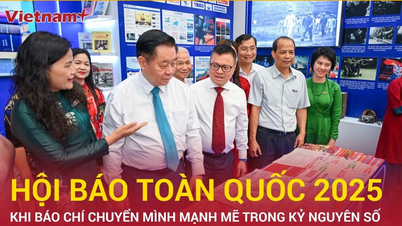



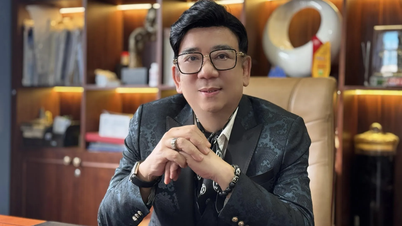

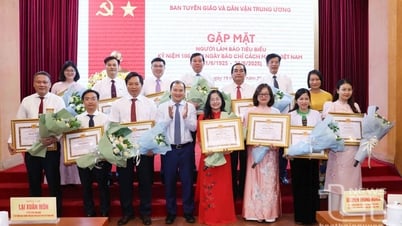



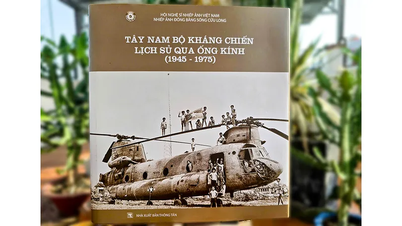



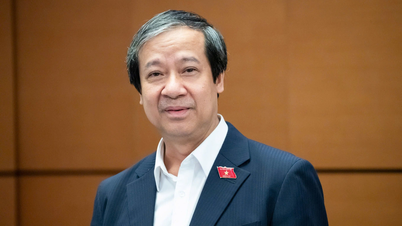
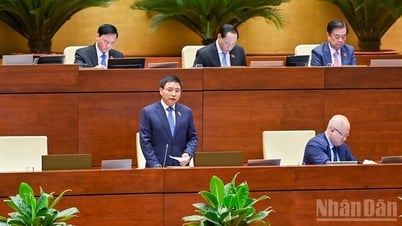
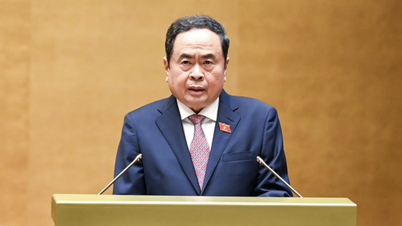
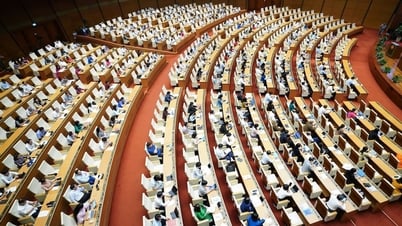







![[Video] Opening of the National Press Forum 2025](https://vphoto.vietnam.vn/thumb/402x226/vietnam/resource/IMAGE/2025/6/19/b7a3477903b3458abfbb2b364af5b689)
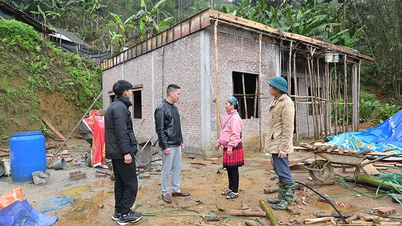
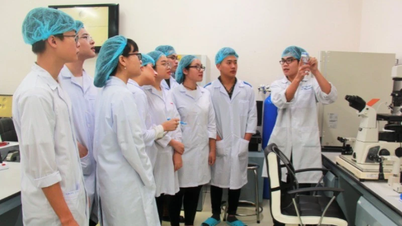
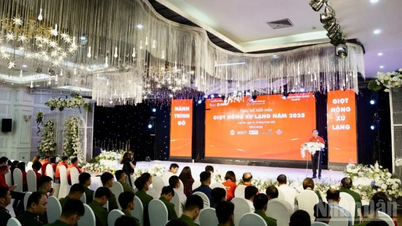
![[Video] Modern Journalists Use AI Properly: Lessons from an American News Agency](https://vphoto.vietnam.vn/thumb/402x226/vietnam/resource/IMAGE/2025/6/19/13d3520a1db54053952ee79023861c27)
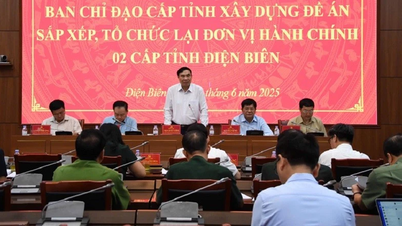













































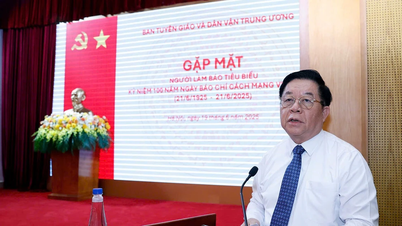

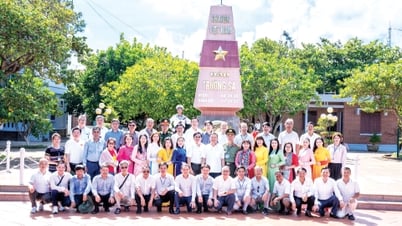



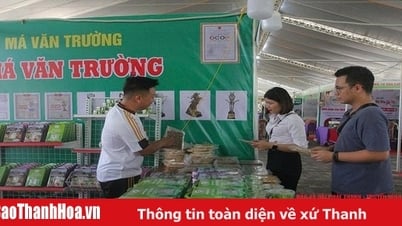












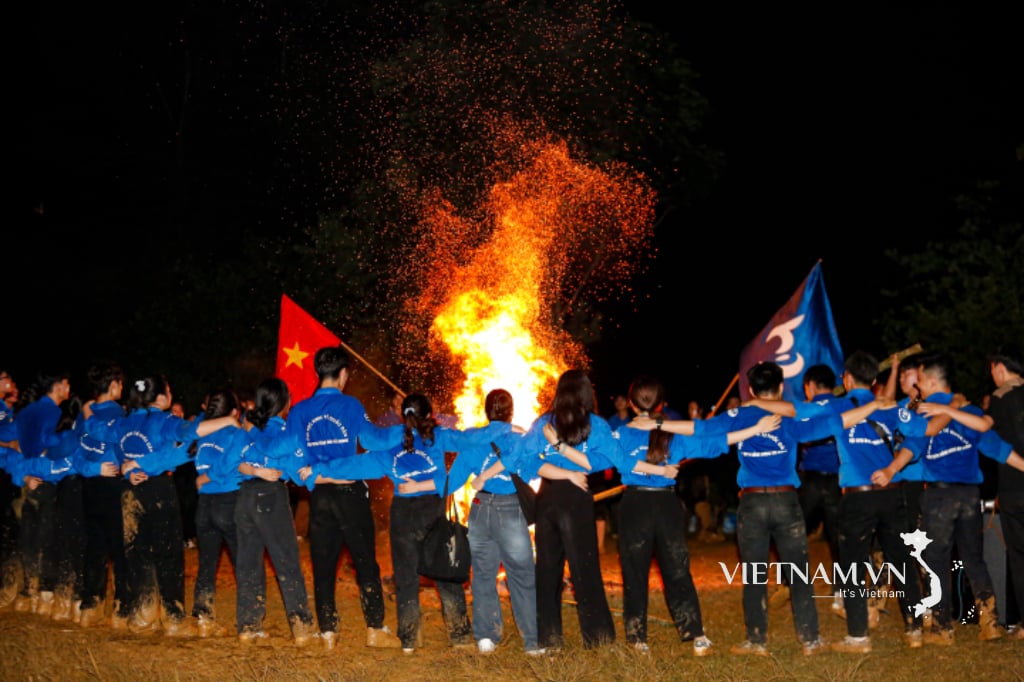


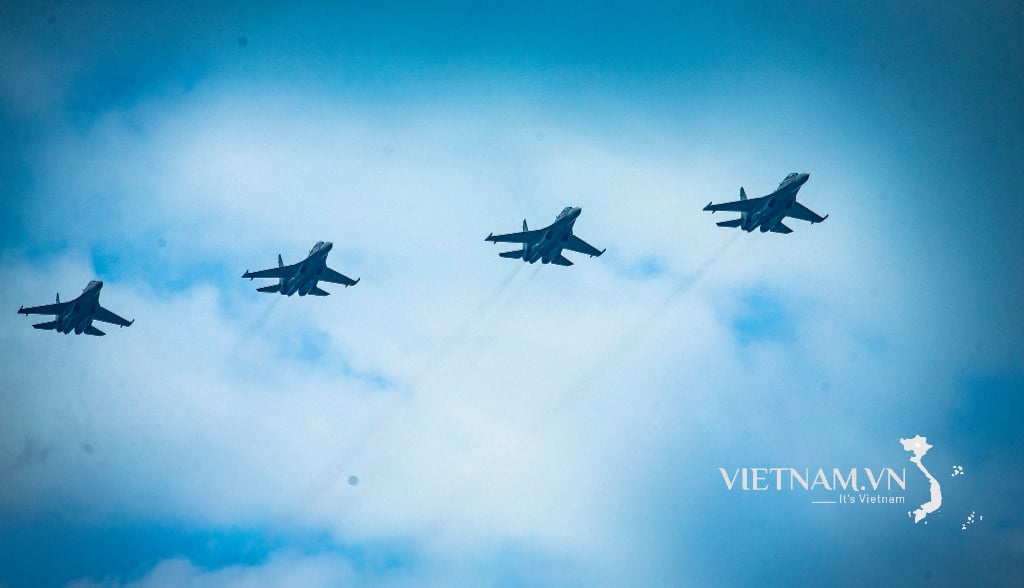
Comment (0)